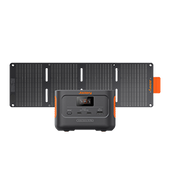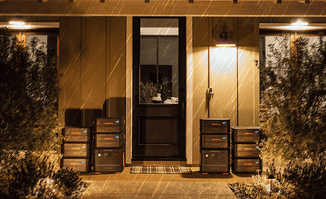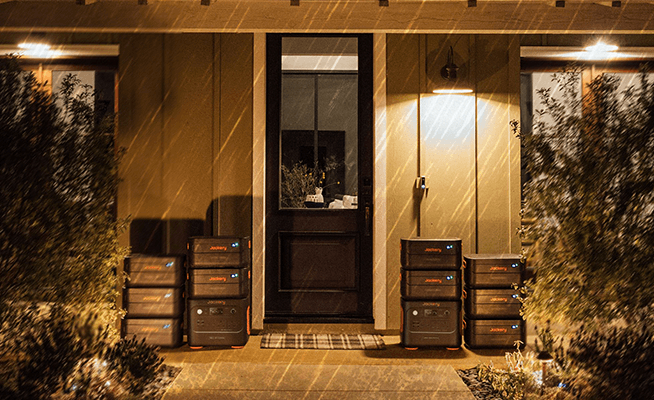Scottish Power is one of the UK's leading energy providers, supplying gas and electricity to households and companies across the country. It offers a range of energy rates to cater to the needs of its customers, including fixed and standard variable tariffs for both residential and business use. Scottish Power presently offers six tariffs: Standard Variable, Cap Tracker, Help Beat Cancer Fixed, Green Fixed, For Business, and Renewable For Business.
While Scottish Power's tariffs are not the most affordable, they are frequently utilised and trusted by customers. Even if Scottish Power tariffs rise at any moment, users can lessen the impact by optimising their electricity consumption, exploring renewable energy options, or acquiring energy storage.
|
Key Takeaways: |
|
Important Information about Scottish Power
Scottish Power, founded in 1990, is a Glasgow-based energy firm that delivers gas and electricity services throughout Scotland and the United Kingdom. Its parent firm, Bilbao-based Iberdrola, bought the supplier in 2006. Today, Scottish Power focuses on green, renewable energy. They were the UK's first energy firm to generate 100% green electricity.
What Services Does Scottish Power Provide?
Scottish Power now operates in three major segments: wholesale electricity, energy networks, and retail energy. Scottish Power's retail energy sector supplies electricity and gas to more than 5 million households and businesses in the UK. The company also provides commercial customers with energy-saving toolkits to help them cut energy use and save money.
Installing smart meters can help company owners identify areas where they can reduce their energy costs. Scottish Power customers can also take advantage of a range of supplementary services, including boiler insurance, appliance insurance (covering washing machines, tumble dryers, dishwashers, and refrigerators), and electric vehicle charging stations.
What Do Customers Think of Scottish Power's Services?
Scottish Power has a TrustPilot rating of 4.3 as of August 2025, based on over 125,136 customer ratings. The vast majority of reviewers had a positive experience with Scottish Power. Sixty-two per cent of these evaluations are five stars, with the majority emphasising excellent customer service, such as quick response times and clear communication.
However, there have been several unfavourable reports about bill accuracy, smart meter installation, and, in some cases, difficulty reaching customer care. Scottish Power's official customer support team reacted to 98% of the negative feedback.

How Can I Contact Scottish Power?
Whether you have a general bill enquiry or a complaint about their service, there are several ways to contact Scottish Power, including:
Phone: 0345 270 0700
Official Website: https://www.scottishpower.co.uk/
Email: contactus@scottishpower.com
Address: 320 St. Vincent Street, Glasgow, Scotland, G2 5AD
You can also contact Scottish Power on social media via Facebook and Twitter.
What Are the Scottish Power Tariffs?
Scottish Power offers a range of energy tariffs to suit the varying preferences and financial circumstances of both home and business customers. All tariffs provide payment options and support various account management methods. Below, we analyse Scottish Power's currently available tariffs for both home and business customers.

Scottish Power's Home Energy Tariffs
Scottish Power offers the following tariff options for UK homes and individuals.
Tariff 1: Standard Variable
The Standard Variable Tariff (SVT) is the supplier's default electricity tariff. Its unit price and standing charge fluctuate with energy market prices and the Ofgem Price Cap. It has no exit fee and no contract end date. Therefore, you can switch to a different plan or supplier at any time without incurring any early exit fees.
Tariff 2: Cap Tracker
Scottish Power's Cap Tracker, launched in June 2026, is £7.50 per year (including VAT) cheaper than the SVT, which adheres to the price cap. Similarly, this tariff does not incur an exit fee. Tariff 3: Help Beat Cancer Fixed
Help Beat Cancer Fixed August 2026 is a fixed tariff offered by Scottish Power and is the most common type of competitive tariff. For Help Beat Cancer Fixed Aug 2026 customers, the unit electricity price and standing charge remain fixed for the duration of the contract. If you switch to another supplier before the end of your agreement, you'll be charged an exit fee of £50 per fuel (electricity/gas).
Tariff 4: Green Fixed
Scottish Power offers several eco-friendly packages, such as Green Fixed Aug 2026, which promises 100% green electricity. This price also includes 12 months of boiler insurance at £4.50 per month (£54.00 per year), with an additional £99 for any excess. As with Help Beat Cancer Fixed Aug 2026, a £50 exit fee per fuel is charged if you switch suppliers.
|
Tariff Name |
Electricity Unit Price |
Electricity Standing Charge |
|
Cap Tracker Sep 2026 A1 |
25.13p |
41.70p |
|
Cap Tracker Sep 2026 S1 |
25.13p |
41.70p |
|
Help Beat Cancer Fixed Aug 2026 TH5 |
24.84p |
41.75p |
|
Help Beat Cancer Fixed Aug 2026 TM5 |
25.16p |
43.75p |
|
Standard Online |
25.13p |
43.75p |
(Source: Theenergyshop)
The energy prices shown above are based only on the London area. Scottish Power's energy prices may vary depending on your location. For households or individuals seeking accurate energy prices in your area, please visit the Scottish Power Personal section.
Scottish Power's Business Energy Tariffs
Scottish Power offers fixed and variable electricity tariffs for businesses of all sizes and across all sectors. Scottish Power currently offers two tariffs for businesses: For Business and Renewable For Business (100% renewable energy). Scottish Power's business tariffs have contract terms of one to three years, locking in your energy costs for the duration of the contract to protect against future increases in energy prices. These tariffs also include variable charges such as network, social, and environmental costs. If these charges change, your payment will be updated quarterly (January, April, July, and October 01st).
|
Tariff Length |
Electricity Unit Rate (p/kWh) |
Electricity Standing Charge |
|
1-Year |
23.94p |
90.29p |
|
2-Year |
23.89p |
90.29p |
|
3-Year |
23.92p |
90.29p |
(Source: Energyhelpline)
This table is based on internal data from August 2025 and is categorised based on a typical customer's electricity consumption (25,000 kWh/year). For businesses looking for accurate energy prices in their area, please visit Scottish Power's Business section.
Will Scottish Power Tariffs Change?
For Scottish Power customers, staying informed about tariff changes is crucial for effective energy use. So, do Scottish Power tariffs fluctuate? If you sign a fixed-price contract, the price remains constant during the contract period; however, it can fluctuate significantly after the contract expires. Therefore, Scottish Power tariffs do change, and they do so frequently.
In particular, its most common standard variable tariff changes with Ofgem's quarterly price cap adjustments. According to Scottish Power's current forecasts, its energy prices are expected to increase when the price cap is reviewed in October 2025.
|
Price Cap Period |
Typical Annual Bill |
|
July - Sept 2025 |
£1,720 |
|
Oct- Dec 2025 |
£1,7485 (difference of £28) |
|
Jan - Apr 2026 |
£1,7335 (difference of £15) |
(Source: Scottishpower)
The data in this table is Scottish Power's forecast and is for reference only.
The following are the main reasons for changes in Scottish Power's tariffs:
Energy Market Volatility: Changes in wholesale prices, such as those for electricity and gas, directly impact energy costs and may necessitate adjustments to Scottish Power's tariffs.
Energy Price Cap Changes: Ofgem reviews and sets the energy price cap every three months (January, April, July, and October). This cap sets the maximum per-unit electricity price and daily fixed charge that energy suppliers can charge Standard Variable Tariff customers. Therefore, Scottish Power's Standard Variable Tariff changes quarterly in conjunction with Ofgem's price cap adjustments.
How Can I Respond to Price Increases Under Scottish Power Tariffs?
According to Scottish Power's current forecasts, energy prices are likely to increase in the last quarter of 2025. Therefore, Scottish Power customers should prepare for this increase. Below are specific tips for customers to manage Scottish Power tariff increases and effectively reduce their electricity costs.

Measure 1: Compare Prices and Consider Switching Suppliers or Tariffs
Compare different Scottish Power tariffs (such as fixed-price tariffs and green energy tariffs), or compare quotes from other suppliers, to find the most cost-effective option. It's best to use Ofgem-certified comparison sites, such as MoneySuperMarket, Compare the Market, and Uswitch.
Measure 2: Optimise Your Daily Electricity Habits
These measures are designed to immediately reduce energy waste and electricity bills at little or no cost. Reduce the use of high-energy-consuming devices (electric water heaters, heaters, etc.)
Turn off standby devices (such as TVs, computers, and routers).
Replace energy-efficient devices (such as LED lights)
Use air conditioning and heating wisely (set to a reasonable temperature)
Measure 3: Improve Home Energy Efficiency
Insulating attics and walls, as well as installing weatherstripping on doors and windows, are among the most effective ways to prevent heat loss and reduce heating and cooling costs. Although the initial investment is substantial, the long-term benefits are significant. Additionally, when replacing an old boiler, consider installing a more efficient condensing boiler or heat pump.
Measure 4: Consider Renewable Energy
If conditions permit and your budget allows, installing solar panels or micro-wind turbines can reduce your electricity bill by generating electricity for your own consumption. If you install solar panels or other renewable energy generators, you can sell excess electricity back to the grid and create an income.
Measure 5: Consider Energy Storage
If you use a time-of-use electricity rate or have installed self-generation, consider purchasing a home energy storage system (such as the Jackery Explorer 2000 Plus or 1000 Plus) to reduce your reliance on the grid.
For customers using time-of-use electricity rates, you can fully charge your energy storage battery during off-peak hours when electricity prices are low, allowing you to use it during peak hours when electricity prices are high. For customers who already have a solar system, you can store any unused energy in the battery for use when needed.
Measure 6: Leverage the Scottish Power Hardship Fund
If you're having trouble paying your Scottish Power energy bill, check if you qualify for the Hardship Fund. For eligible customers, the Scottish Power Hardship Fund can help pay off or reduce the outstanding balance on their energy account.
Measure 7: Consultation and Communication
Contact Scottish Power to inquire about any special programs for established customers or specific groups. Alternatively, visit Energy Advice or contact Advice Direct Scotland on 0808 196 8660 (free call) for free, practical energy-related advice and information.
Jackery: The Best Solution to Expensive Scottish Power Tariffs
In response to projected increases in Scottish Power prices, Jackery offers a flexible, efficient, and cost-effective solution to help users reduce electricity costs, optimise energy management, and increase power autonomy.
The Jackery Portable Power Station provides a practical solution to Scottish Power's high electricity bills by combining variable charging and discharging strategies, large-capacity energy storage, integrated solar power, and an efficient, portable design.
Jackery Explorer 2000 Plus
The Jackery Explorer 2000 Plus portable power station is an innovative solution to the ever-increasing Scottish Power tariffs. If you use time-of-use electricity rates, where electricity prices are very low at night or during specific hours, and peak daytime prices are high, you can charge the Jackery 2000 Plus at a very low cost during the off-peak hours.
During daytime periods when electricity prices are high, use the Jackery to power your home appliances instead of drawing power directly from the grid. It can also serve as a reliable backup power source for the home, ensuring continuous power to critical equipment such as lighting, refrigeration, and medical devices (like oxygen concentrators) during a grid outage, thereby avoiding the inconvenience and losses caused by power outages. The Jackery Explorer 2000 Plus offers the following key features:

Large Capacity (2-12 kWh): A single Jackery Explorer 2000 Plus power station has a capacity of 2042.8Wh and can simultaneously support up to five additional battery packs, expanding the capacity from 2 kWh to an impressive 12 kWh. This means it can store enough off-peak power to power a home for extended periods.
High Power Output (3000W): Its 3000W rated power (surge peak: 6000W) can power most high-power household appliances, such as lawn mowers, microwave ovens, and electric kettles, making it highly versatile.
Ultra-Fast Charging (Full in as Fast as 2 Hours): It supports multiple charging methods, including AC, solar, and vehicle charging. A full charge can be achieved in as fast as 1.7 hours using a standard household outlet. In sufficient sunlight, a full charge using six SolarSaga 200W solar panels takes just 2 hours.
Ultra-Long Durability: The Explorer 2000 Plus features a high-performance LiFePO4 battery with a durability rating (4,000 charge and discharge cycles), ensuring a lifespan of up to 10 years even with daily use.
Jackery Explorer 1000 Plus
The Jackery 1000 Plus is essentially a high-capacity, mobile "home microgrid." As such, it's a highly innovative, practical, and efficient "tactical" solution for addressing high electricity prices, such as those in Scottish Power, and is particularly suitable for renters and those unable to install fixed energy storage systems.
Its cost-saving strategy doesn't directly reduce the unit price of electricity purchased from the grid. Instead, it achieves this by shifting loads, leveraging off-peak electricity prices through time-of-use pricing, or storing green power.
The following are the core advantages of the Jackery Explorer 1000 Plus as a solution:

Large Capacity and High Power Output: The Explorer 1000 Plus features a high-performance 1264Wh long-lasting lithium-iron-phosphate battery and a 2000W full-power, pure sine-wave inverter, providing ample power for nearly every essential device.
Compatible and Portable: The Jackery Explorer 1000 Plus features multiple output ports, including AC/DC/USB, making it compatible with a wide range of devices without the need for additional adapters. This versatility meets emergency or supplemental power needs at home. Its lightweight (32 lbs) and compact size (14 x 10.24 x 11.14 in) make it easy to move and quickly deploy in various locations.
Easy to Use: Easily connect the solar panels to the power station in just 60 seconds. Using the Jackery app, you can conveniently track the power station's status, including remaining battery life, usage time, and output/input information, on your mobile device.
Sustainable: It uses completely eco-friendly and recyclable packaging, resulting in zero emissions. The Jackery 1000 Plus and a range of other products have received TÜV SÜD carbon footprint certification, leading the industry in this regard.
Are Scottish Power Tariffs the Cheapest Compared to Other Energy Suppliers?
Whether Scottish Power is the cheapest depends entirely on your specific electricity usage, your region, and the tariff you choose. For most users, Scottish Power isn't typically the absolute most affordable option on the market, especially when compared to emerging providers like Octopus Energy.
However, if you want to understand whether Scottish Power is a good option, compare it to other energy providers, such as the other five of the Big Six (Octopus Energy, E.on Next, EDF Energy, OVO Energy, and British Gas).
Below, I'll provide a detailed analysis of each provider's pricing strategies and features to help you assess whether Scottish Power is a good option.
Octopus Energy: Renowned for its innovation and competitive pricing, Octopus Energy is often the most affordable energy provider. It offers a variety of time-of-day tariffs that require users to change their electricity usage (such as charging at night) to maximise savings.
E.on Next: E.on Next's prices may not be the lowest on the market, but they are generally very competitive. Its "Next Pledge" is a variable energy tariff that guarantees prices will always be below the Office of Gas and Electricity Markets (Ofgem) price cap.
OVO Energy: OVO Energy's prices are generally competitive, but they may not offer the lowest tariffs as frequently as Octopus or E.on Next.
EDF Energy: EDF Energy is the UK's largest producer of low-carbon electricity, offering moderate to high prices. Its standard variable tariffs are generally uncompetitive, but specific plans (such as electric vehicle plans) can be very competitive.
British Gas: As the UK's largest energy supplier, its standard variable tariffs are typically not the most competitive. However, its fixed plans sometimes offer competitive offers.
Scottish Power: In terms of price competitiveness, Scottish Power rarely ranks among the most affordable suppliers. Its fixed plans are generally more expensive than those of Octopus, E.on Next, and even some smaller suppliers.
|
Supplier Name |
Tariff Name |
Tariff Type |
Tariff Length |
Cost Per Month |
Cost Per Year |
Early Exit Fee |
|
Octopus Energy |
Octopus 14M Fixed January 2025 v1 |
Fixed |
14 months |
£139 |
£1,667 |
£0 |
|
Scottish Power |
Help Beat Cancer Flexi Jun 2026 TM3 |
Variable |
No End Date |
£140 |
£1,685 |
£0 |
|
British Gas |
Fixed Tariff v21 |
Fixed |
12 months |
£140 |
£1,686 |
£100 |
|
E.ON Next |
Next Fixed 18m v15 |
Fixed |
18 months |
£141 |
£1,687 |
£100 |
|
EDF Energy |
Simply Fixed 2Yr Jan27v4 |
Fixed |
until January 31st 2027 |
£141 |
£1,688 |
£150 |
|
EDF Energy |
Simply Fixed Direct 1Yr Jan26v8 |
Fixed |
until January 31st 2026 |
£141 |
£1,691 |
£0 |
|
EDF Energy |
Simply Fixed 1Yr Jan26v8 |
Fixed |
until January 31st 2026 |
£141 |
£1,691 |
£50 |
|
Octopus Energy |
Flexible Octopus |
Variable |
No End Date |
£141 |
£1,700 |
£0 |
|
British Gas |
The Longer Fix v18 |
Fixed |
24 months |
£143 |
£1,711 |
£150 |
|
E.ON Next |
Next Pledge Tracker 12m V7 |
Variable |
No End Date |
£143 |
£1,712 |
£0 |
|
EDF Energy |
Simply Tracker Mar26 |
Variable |
No End Date |
£143 |
£1,715 |
£0 |
|
E.ON Next |
Next Fixed 12m v42 |
Fixed |
12 months |
£143 |
£1,720 |
£100 |
|
E.ON Next |
Next Gust 12m V16 |
Fixed |
12 months |
£145 |
£1,741 |
£100 |
|
OVO Energy |
Extended Fixed January 09th 2025 |
Fixed |
18 months |
£146 |
£1,747 |
£150 |
|
OVO Energy |
1 Year Fixed January 09th 2025 |
Fixed |
12 months |
£146 |
£1,754 |
£100 |
|
OVO Energy |
Simpler Energy |
Variable |
No End Date |
£147 |
£1,764 |
£0 |
|
E.ON Next |
Next Fixed 24M V27 |
Fixed |
24 months |
£147 |
£1,765 |
£200 |
|
ScottishPower |
Standard |
Variable |
No End Date |
£147 |
£1,765 |
£0 |
|
British Gas |
Standard Variable |
Variable |
No End Date |
£147 |
£1,765 |
£0 |
|
EDF Energy |
Standard (Variable) |
Variable |
No End Date |
£147 |
£1,765 |
£0 |
|
OVO Energy |
2 Year Fixed + Heating Control January 09th 2025 |
Fixed |
24 months |
£151 |
£1,807 |
£190 |
|
OVO Energy |
1 Year Fixed + Greener Electricity January 09th 2025 |
Fixed |
12 months |
£153 |
£1,834 |
£100 |
(Source: Localenergyprices)
The above data is based on the energy usage of a three-bedroom house in the East Midlands and is provided for reference only. Your actual quote may vary depending on your location and the energy supplier you use.
In short, for the vast majority of users, Scottish Power is unlikely to be the cheapest option. Octopus Energy and E.on Next often offer the most competitive fixed-rate plans on the market. However, energy prices fluctuate in response to market conditions. What may be the cheapest tariff today may not be tomorrow.

Why Choose Scottish Power?
Scottish Power attracts many customers due to its numerous advantages. From user experience to social responsibility and sustainable energy, Scottish Power's strengths cater to the diverse needs of its customers.
Renewable Electricity Options
Scottish Power offers a wide range of renewable energy options and is the first of the UK's six largest energy suppliers to be 100% renewable. Currently, all of its electricity is generated by over 40 wind farms across the UK, operated by its parent company, Iberdrola.
Diverse Payment Options
Scottish Power offers a variety of bill payment options, including Direct Debit and Pay As You Go. Customers can choose to pay using cash, online accounts, or a mobile app, adapting to their individual spending habits and avoiding the constraints of a single payment method.
|
Payment Methods |
Details |
|
Direct Debit |
Spread your energy costs evenly throughout the year |
|
Pay As You Go |
Pay As You Go with a prepayment meter |
|
Monthly Cash |
Regular monthly cash payments |
|
Fuel Direct |
Payment is taken via the DWP from your state benefits |
|
Monthly Bill |
Pay your bills monthly in full when you receive them |
|
Quarterly Bill |
Pay your bills quarterly in full when you receive them |
|
Online or one-off payments |
You can pay your bill or make a one-off payment into your account online, through the ScottishPower App, by calling our automated payment line at any time on 0800 001 5115, by direct banking, or using a giro. |
Online Account Management
Customers can manage their accounts in real-time using the Scottish Power website or mobile app, which allows them to view bill details, update personal information, contact customer support, and submit complaints. This digital service streamlines offline contact, saving clients valuable time.
Supporting Cancer Research UK
Scottish Power actively participates in social causes, partnering with Cancer Research UK (and other charities) to support cancer research and treatment through donations, public events, and customer bill donation schemes. Since partnering with Cancer Research UK in 2012, Scottish Power has raised £40 million for the cause.
FAQs
The following are the frequently asked questions about the Scottish Power tariffs.
1. What are Scottish Power's current tariffs?
Scottish Power's currently available tariffs include Standard Variable, Cap Tracker, Help Beat Cancer Fixed, Green Fixed, For Business, and Renewable For Business. Specific prices vary by location. Please visit the Scottish Power website and enter your postcode to get a quote.
2. Which Scottish Power tariff is best?
The best Scottish Power tariff depends on your personal circumstances and energy usage. If you value price stability, consider a fixed-rate tariff (Help Beat Cancer Fixed or Green Fixed) to lock in your unit price for the duration of your contract. If you want to avoid price caps while maintaining flexibility, consider a Standard Variable or Cap Tracker plan. These ensure you pay below the Ofgem price cap and adjust the price every three months without an exit fee. If you want to support renewable energy, Green Fixed, which provides 100% green electricity, is recommended.
3. Who is cheaper, Octopus or Scottish Power?
Octopus Energy is generally considered cheaper. Compared to Scottish Power, Octopus's variable and fixed electricity prices are slightly more affordable.
The following table compares the prices of Octopus and Scottish Power under the same conditions. It is for reference only.
|
Energy Suppliers |
Tariff Name |
Tariff Description |
Monthly Cost |
|
Scottish Power |
Standard Variable |
No tariff end date, and prices can go up or down |
£147 |
|
Help Beat Cancer Fixed Tariff |
This is a 14-month fixed tariff with an exit fee of £50 per fuel. |
£147 |
|
|
Octopus Energy |
Tracker Tariff |
Smart tariff where prices change daily. No contract. No exit fees.* |
£123 |
|
OctopusFixed 14m |
14-month, fixed-rate contract. No exit fees. |
£143 |
|
|
Flexible Octopus |
Flexible tariff where prices fluctuate with the market. No contract. |
£146 |
(Source: Energy Review)
4. Does Scottish Power offer the best renewable energy option?
Yes. Scottish Power's electricity comes entirely from renewable energy sources, such as wind farms, generated by its own wind farms in the UK. Therefore, while they proudly claim to be 100% green energy, they do not rely on purchasing REGO certificates to meet their green electricity needs.
Final Thoughts
In summary, Scottish Power provides electricity and gas to approximately 5 million households and businesses, offering numerous benefits, including multiple payment methods, online account management, renewable energy options, and support for Cancer Research UK. Scottish Power's prices are attractively priced compared to those of Octopus Energy and E.on Next. Customers need not worry about future Scottish Power price hikes, as the Jackery Explorer 2000 Plus and 1000 Plus can help mitigate the impact.




































































